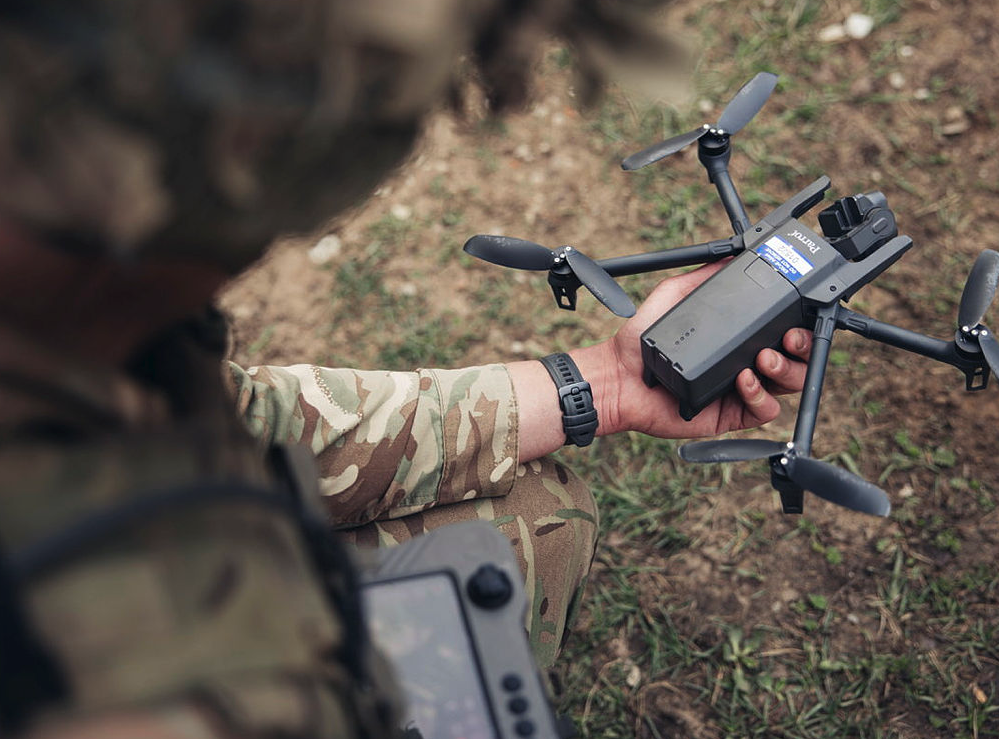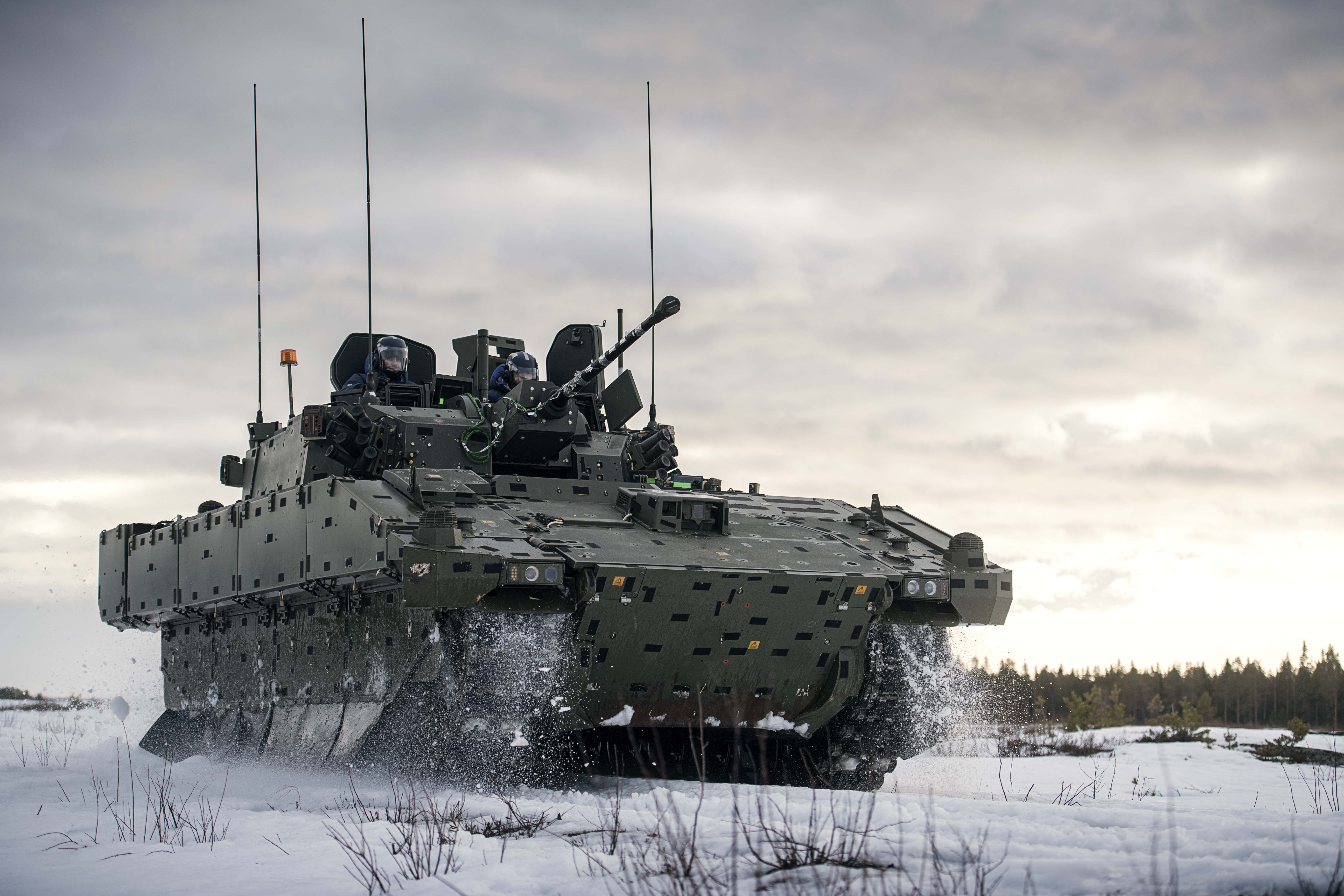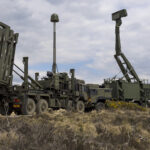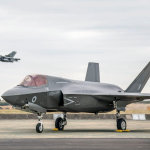The British Army faces a pivotal moment as it navigates the evolving demands of modern warfare within the framework of the Strategic Defence Review (SDR) expected in spring 2025. The SDR places NATO at the core of the UK’s defence posture, requiring the Army to maintain credible, deployable forces capable of deterring peer adversaries, particularly in high-threat regions like the High North and the Baltics, while supporting operations in the Middle East and Africa. This essay proposes a restructured British Army organised around two divisions, one tracked and one wheeled, each comprising three brigades, with each brigade containing three all-arms battle groups. These battle groups would serve as the primary deployable fighting units, with brigades and divisions acting as resource providers. The tracked division would sustain two armoured battle groups, one in the High North on a three-year accompanied posting and one in the Baltics on six-month rotations, while the wheeled division would provide support and manoeuvre for the tracked division and enable operations in the Middle East and Africa. This essay examines the equipment forecast, the deployment of divisional and brigade-level assets, and the cultural and structural challenges of this transformation, concluding with a proposed timeline for implementation. This essay specifically leaves out 16AABCT and associated light infantry (including UKSF and Royal Marines).
Proposed Structure: A Two-Division Model
The proposed structure realigns the British Army into two deployable divisions: a tracked Heavy Division and a wheeled Expeditionary Division. Each division would consist of three brigades, with each brigade comprising three all-arms battle groups, totalling 18 battle groups across the Army. This structure departs from the current model, where the 3rd (UK) Division is the primary warfighting formation, and the 1st (UK) Division focuses on lighter roles. The new model ensures both divisions are optimised for combined arms manoeuvre, with battle groups as the primary tactical units, supported by brigade and divisional enablers.
The Heavy Division (Tracked)
The Heavy Division, based on the 3rd (UK) Division, would be optimised for high-intensity conflict against peer adversaries, particularly in NATO’s northern and eastern flanks. It would consist of three Armoured Brigade Combat Teams (ABCTs), each with three battle groups. Each battle group would include:
- 1 Armoured Squadron: Equipped with 14 Challenger 3 main battle tanks, providing heavy firepower and shock action.
- 1 Armoured Infantry Company: Equipped with Ajax infantry fighting vehicles (IFVs), offering mobility and protection.
- 1 Mechanised Infantry Company: Equipped with tracked Ares vehicles for dismounted support and anti-tank capabilities.
- Support Elements: Including a platoon of 120mm mortars, a reconnaissance troop with Jackal 2 vehicles, and a fire support team with Javelin anti-tank guided missiles.
The Heavy Division would sustain two forward-deployed battle groups: one in the High North (e.g., Norway) on a three-year accompanied posting, allowing families to be collocated for stability, and one in the Baltics (e.g., Estonia) on six-month rotations as part of NATO’s Enhanced Forward Presence (EFP). The three-year posting in the High North would leverage existing infrastructure, such as NATO bases in Norway, to support long-term deterrence, while the Baltic deployment would align with rapid-response requirements. Each ABCT would rotate its battle groups to maintain one in the Baltics, one in training, and one in maintenance, ensuring sustainable readiness.
The Expeditionary Division (Wheeled)
The Expeditionary Division, restructured from the 1st (UK) Division, would focus on rapid deployment and manoeuvre, supporting the Heavy Division and conducting operations in the Middle East and Africa. It would comprise three Mechanised Brigade Combat Teams (MBCTs), each with three battle groups. Each battle group would include:
- 1 Cavalry Squadron: Equipped with Boxer wheeled IFVs armed with 30mm or 40mm cannons for enhanced firepower.
- 1 Mechanised Infantry Company: Equipped with Boxer vehicles for mobility and protection.
- 1 Light Infantry Company: Equipped with Foxhound protected mobility vehicles for rapid deployment in austere environments.
- Support Elements: Including a platoon of 120mm mortars, a reconnaissance troop with Jackal 2, and a fire support team with Javelin missiles.
The Expeditionary Division would provide flexible, self-deployable forces capable of reinforcing the Heavy Division in Europe or conducting independent operations in regions like the Sahel or the Horn of Africa. Its wheeled platforms, such as Boxer, would enable rapid movement over long distances, making it ideal for expeditionary missions where infrastructure is limited.
Equipment Forecast and Deployment
The British Army’s equipment modernisation, as outlined in the SDR and Future Soldier programme, provides the foundation for this structure. Key platforms and their deployment are as follows:
Heavy Division Equipment
- Challenger 3 Main Battle Tanks: The Army is upgrading to 148 Challenger 3 tanks, sufficient for two armoured regiments per ABCT (36 tanks per brigade, 108 total for the division). These tanks, with enhanced fire control and protection, would form the backbone of the Heavy Division’s battle groups, particularly for the Baltic and High North deployments.
- Ajax IFVs: Approximately 589 Ajax vehicles are on order, providing armoured infantry and reconnaissance capabilities. Each ABCT would have one Ajax-equipped battalion per battle group, ensuring mobility and firepower.
- Ares Vehicles: As part of the Ajax family, Ares would support dismounted infantry and anti-tank teams, enhancing battle group flexibility.
- 155mm Artillery: The Army’s 155mm artillery capability, currently limited after donating AS90 howitzers to Ukraine, would be reconstituted with modern systems like the Archer or K9 Thunder. Each ABCT would have an artillery regiment with 24–32 guns, providing close support to battle groups. Divisional level 155mm batteries would be held in reserve for concentrated fires.
- M270 MLRS: The Army has ordered 61 M270 launchers, with plans to explore extended range guided rockets. Each ABCT would have a battery of six launchers, with a divisional MLRS regiment of 18 launchers for deep fires.
- Drones: Protector RG Mk 1, Jackal and miniature UAS would be integrated at the brigade level for ISTAR (Intelligence, Surveillance, Target Acquisition, and Reconnaissance), with divisional-level loitering munitions for precision strikes.
- Support Helicopters: Chinook helicopters, with 14 new extended-range models arriving from 2029, would be allocated at the divisional level to provide logistics and troop transport for battle groups in the High North and Baltics.
Expeditionary Division Equipment
- Boxer Vehicles: The Army aims for initial operating capability of Boxer by late 2025, with full capability by 2032. Each MBCT would have two Boxer-equipped battalions per battle group, with variants including IFVs, mortars, and tank destroyers with 105mm or 120mm cannons.
- Foxhound Vehicles: These would equip light infantry companies for rapid deployment in austere environments, particularly in the Middle East and Africa.
- 105mm Light Guns: Each MBCT would have a Regt of 18 L118 105mm light guns for mobile fire support, suitable for expeditionary operations.
- 120mm Mortars: Integrated at the battle group level, 120mm mortars (e.g., on Boxer or Ares platforms) would provide organic fire support, balancing range and lethality.
- AH-64E Apache Helicopters and Wildcat: Upgraded Apaches would be assigned at the brigade level, with each MBCT having a squadron of six to eight helicopters for close air support and anti-armour roles complimented by Wildcat in the liaison and troop insertion role.
- Drones: Similar to the Heavy Division, MBCTs would employ Jackal, other UAV’s and miniature UAS for ISTAR, with divisional-level loitering munitions for deep strikes.
Deployment Strategy
The Heavy Division would sustain its two forward-deployed battle groups through a rotational cycle. The High North battle group, accompanied by families, would include a robust logistics package (e.g., 101st Operational Sustainment Brigade) to support a three-year posting, ensuring self-sufficiency in remote Arctic conditions. The Baltic battle group would rotate every six months, drawing from the three ABCTs to maintain readiness and avoid overstretch. Divisional enablers, such as 155mm artillery and MLRS, would be held centrally and deployed as needed to support these battle groups, particularly in the Baltics, where NATO’s EFP requires rapid reinforcement. Chinook helicopters would facilitate logistics and mobility, especially in the High North’s challenging terrain.

The Expeditionary Division would support the Heavy Division by providing wheeled battle groups for rapid reinforcement in Europe, particularly in Poland or the Baltics, where their mobility would complement tracked forces. In the Middle East and Africa, MBCTs would deploy independently, leveraging Boxer’s modularity and Foxhound’s agility for counterinsurgency, peacekeeping, or humanitarian missions. Brigade-level assets like AH-64E Apaches and 120mm mortars would provide organic firepower, while divisional 155mm artillery and MLRS would be tasked for high-intensity scenarios.
Cultural and Structural Challenges
The proposed restructuring faces significant cultural and structural challenges, reflecting the complexities of transforming a historically conservative institution like the British Army.
Cultural Challenges
- Resistance to Change: The Army’s regimental system fosters strong unit identities, which can resist reorganisation into battle group-centric structures. Soldiers and officers may view the dissolution of traditional battalions into smaller, flexible battle groups as a loss of heritage.
- Adaptation to New Doctrine: The shift to all-arms battle groups requires a cultural embrace of multi-domain warfare, integrating drones, cyber, subversives, and electronic warfare. This demands a mindset shift from traditional armoured warfare to hybrid operations, which may face pushback from senior leaders accustomed to conventional structures.
- Personnel Retention: The Army struggles with recruitment and retention, with a current strength of approximately 73,000 regulars which most commentators state is too small. Sustaining long-term postings in the High North and frequent rotations in the Baltics could exacerbate personnel strain, particularly for families.
Structural Challenges
- Logistical Constraints: The Army’s logistics infrastructure, hollowed out by years of budget cuts, struggles to support a deployable division. Mobilising two divisions, even with battle group focus, requires significant investment in combat service support (CSS) units, such as the Royal Logistic Corps and Royal Electrical and Mechanical Engineers.
- Equipment Shortfalls: The donation of AS90 howitzers and tactical weapons (like Javelin and NLAW) to Ukraine has left gaps in artillery and tactical level capabilities. The slow pace of modernisation, with Boxer and Challenger 3 not fully operational until 2032 and 2030 respectively, risks delaying readiness.
- Interoperability with NATO: While the SDR emphasises NATO interoperability, aligning two distinct divisions with allied forces (e.g., Polish or US divisions) requires standardised equipment and training. The mix of tracked and wheeled platforms may complicate joint operations.
- Budgetary Pressures: The Ministry of Defence faces another overspend, and the SDR’s ambitious goals may exceed current funding. Balancing equipment procurement with personnel and logistics investment is a persistent challenge.
Despite these challenges, all change is inherently difficult, and the Army has a history of adapting to new realities, as seen in its transformations post-Cold War and during the Future Soldier programme. The proposed structure leverages existing equipment plans and aligns with NATO’s strategic priorities, offering a feasible path forward.
Sustainability and Alignment with the SDR
The two-division model aligns with the SDR’s focus on NATO deterrence and global deployability. By concentrating warfighting capability in battle groups, the Army can deploy smaller, self-sufficient units without overcommitting resources, addressing the SDR’s call for a “minimum deployable capability” by 2030. The Heavy Division’s focus on the High North and Baltics ensures NATO commitments are met, while the Expeditionary Division’s flexibility supports the UK’s global ambitions in the Middle East and Africa. The use of divisional enablers like 155mm artillery and MLRS ensures concentrated firepower for high-intensity conflicts, while brigade-level assets like Apaches and 120mm mortars enhance tactical flexibility.

This structure mitigates overstretch by maintaining a sustainable rotation cycle. The Heavy Division’s three ABCTs can rotate one battle group in the Baltics every six months, with two in reserve for training and maintenance, adhering to Harmony Guidelines requiring 2.5 years between deployments. The Expeditionary Division’s wheeled platforms reduce logistical burdens, enabling rapid deployment without the heavy sustainment requirements of tracked forces. By integrating drones and cyber capabilities, the Army can enhance its combat power within existing headcount constraints, addressing General Sir Roly Walker’s goal to double fighting power by 2028 and triple it by 2030.
Timeline for Transformation
The transformation to a two-division, battle group-centric Army requires a phased approach, aligned with equipment delivery and the SDR’s timeline. The following is a proposed schedule:
- 2025–2026: Planning and Initial Reorganisation
- Conduct a comprehensive review of current force structure and equipment inventory post-SDR publication (spring 2025).
- Begin reorganisation of 3rd (UK) Division into the Heavy Division, forming three ABCTs with existing Challenger 2, Warrior, and AS90/Archer assets as interim measures.
- Restructure 1st (UK) Division into the Expeditionary Division, leveraging Foxhound and initial Boxer deliveries.
- Initiate recruitment and training programmes to bolster CSS units (e.g., RLC, REME).
- 2027–2028: Equipment Integration and Training
- Integrate Challenger 3 tanks and Ajax vehicles into ABCTs as deliveries begin (2027 onwards).
- Achieve initial operating capability for Boxer in MBCTs by late 2025, expanding to full brigades by 2028.
- Procure 155mm artillery (e.g., Archer or K9) and enhance M270 MLRS with extended-range rockets.
- Establish training facilities in the UK and Germany for multi-domain operations, including drone and cyber integration.
- 2029–2032: Full Operational Capability
- Deploy the High North battle group on a three-year accompanied posting by 2029, supported by new Chinook helicopters.
- Commence Baltic rotations with fully equipped ABCT battle groups by 2030, aligned with Challenger 3 and Ajax full operating capability.
- Achieve full operating capability for the Expeditionary Division by 2032, with Boxer variants fully integrated.
- Conduct large-scale NATO exercises to test interoperability and divisional enablers.
- 2033–2035: Consolidation and Sustainment
- Refine battle group doctrine based on operational feedback from High North and Baltic deployments.
- Expand drone and cyber capabilities, integrating autonomous systems like Arondite for enhanced combat strength.
- Establish a permanent logistics infrastructure in the High North to support accompanied postings.
- Maintain regular rotations in the Baltics and expeditionary deployments in the Middle East and Africa.
Conclusion
The proposed two-division structure, with a tracked Heavy Division and a wheeled Expeditionary Division, offers a robust framework for the British Army to meet the SDR’s demands for NATO deterrence and global deployability. By organising around all-arms battle groups, supported by brigade and divisional enablers, the Army can sustain forward deployments in the High North and Baltics while maintaining flexibility for operations in the Middle East and Africa. The equipment forecast, including Challenger 3, Ajax, Boxer, and modern artillery, supports this transformation, though logistical and budgetary constraints pose challenges. Cultural resistance and structural gaps, such as personnel shortages and equipment delays, are significant but not insurmountable, as the Army has a history of adapting to change. The proposed timeline ensures a gradual transition, aligning with equipment deliveries and the SDR’s 2030 target for a modernised warfighting division. This restructuring positions the British Army as a credible, agile force capable of meeting 21st-century threats, reinforcing the UK’s role as a leading NATO partner.
Lee Pilgrim
Lee Pilgrim tweets as @Mtarfalee



